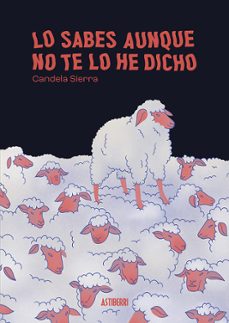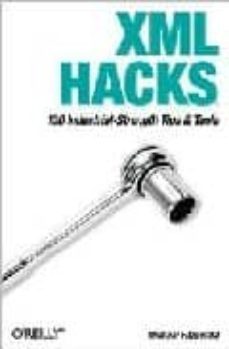Imprescindibles
Ficción
No Ficción
Ciencias y tecnología Biología Ciencias Ciencias naturales Divulgación científica Informática Ingeniería Matemáticas Medicina Salud y dietas Filología Biblioteconomía Estudios filológicos Estudios lingüísticos Estudios literarios Historia y crítica de la Literatura
Humanidades Autoayuda y espiritualidad Ciencias humanas Derecho Economía y Empresa Psicología y Pedagogía Filosofía Sociología Historia Arqueología Biografías Historia de España Historia Universal Historia por países
Infantil
Juvenil
#Jóvenes lectores Narrativa juvenil Clásicos adaptados Libros Wattpad Libros Booktok Libros de influencers Libros de Youtubers Libros Spicy Juveniles Libros LGTBIQ+ Temas sociales Libros ciencia ficción Libros de acción y aventura Cómic y manga juvenil Cómic juvenil Manga Shonen Manga Shojo Autores destacados Jennifer L. Armentrout Eloy Moreno Nerea Llanes Hannah Nicole Maehrer
Libros de fantasía Cozy Fantasy Dark academia Hadas y Fae Romantasy Royal Fantasy Urban Fantasy Vampiros y hombres lobo Otros Misterio y terror Cozy mistery Policiaca Spooky Terror Thriller y suspense Otros
Libros románticos y de amor Dark Romance Clean Romance Cowboy Romance Mafia y amor Romance dramatico Romcom libros Sport Romance Otros Clichés Enemies to Lovers Friends to Lovers Hermanastros Slow Burn Fake Dating Triángulo amoroso
Cómic y manga
Novela gráfica Novela gráfica americana Novela gráfica europea Novela gráfica de otros países Personajes, series y sagas Series y sagas Star Wars Superhéroes Cómics DC Cómics Marvel Cómics otros superhéroes Cómics Valiant
eBooks
Literatura Contemporánea Narrativa fantástica Novela de ciencia ficción Novela de terror Novela histórica Novela negra Novela romántica y erótica Juvenil Más de 13 años Más de 15 años Infantil eBooks infantiles
Humanidades Autoayuda y espiritualidad Ciencias humanas Economía y Empresa Psicología y Pedagogía Filosofía Historia Historia de España Historia Universal Arte Cine Música Historia del arte
Ciencia y tecnología Ciencias naturales Divulgación científica Medicina Salud y dietas Filología Estudios lingüísticos Estudios literarios Historia y crítica de la Literatura Estilo de vida Cocina Guías de viaje Ocio y deportes
MICHAEL FITZGERALD
Recibe novedades de MICHAEL FITZGERALD directamente en tu email
Filtros
Del 1 al 4 de 4
EDITORS 9789999066099
Tapa blanda
O'REILLY & ASSOCIATES 9780596007119
Intended for experienced web developers, this collection of 100 tips offers advice on performing the core tasks associated with XML. It explores ways to use XSLT and XPath to transform XML documents, then discusses common XML vocabularies and frameworks, schema languages, and syndication feeds. A thermometer rates the difficulty of each hack. Annotation ©2004 Book News, Inc., Portland, OR
Ver más
Tapa blanda
ANAYA MULTIMEDIA 9788441518131
La tecnología XML define una sintaxis para la creación de un marcado. El término "marcado" se refiere a elementos, atributos y otras estructuras que permiten etiquetar documentos y datos de manera que puedan tener un significado que pueda ser interpretado o reconocido por otros individuos u otros ordenadores. XML quizás no sea en sí la panacea para todos los problemas de intercambio, pero cada vez resulta una opción más práctica para empaquetar y mover datos entre los sistemas o bien para representar los datos de un modo legible y consistente. La misión de este libro consiste en servir como punto de partida para conocer muchas de las cosas que pueden hacerse mediante este lenguaje. Se centra en los casos más representativos y en tareas fundamentales que pueden realizarse rápidamente como definir, leer, crear y manipular documentos XML y poner a trabajar en definitiva el enorme poder de XML en Internet y en diversas aplicaciones de productividad. Si está creando contenido para un sitio web, administrando datos para su intercambio electrónico, escribiendo un artículo o un manual o bien desarrollando sus propios proyectos personales, encontrará en esta obra todas las técnicas necesarias para tener éxito gracias a XML.
Ver más
Tapa blanda
O'REILLY & ASSOCIATES 9780596003272
XSLT is a powerful language for transforming XML documents into something else. That something else can be an HTML document, another XML document, a Portable Document Format (PDF) file, a Scalable Vector Graphics (SVG) file, a Virtual Reality Modeling Language (VRML) file, Java code, or a number of other things. You write an XSLT stylesheet to define the rules for transforming an XML document, and the XSLT processor does the work. As useful as XSLT is, its peculiar characteristics make it a difficult language in which to get started. In fact, newcomers are often a little dazed on first contact. Learning XSLT offers a hands-on introduction to help them get up to speed with XSLT quickly. The book will help web developers and designers understand this powerful but often mystifying template-driven and functional-styled language, getting them over the many differences between XSLT and the more conventional programming languages. Learning XSLT moves smoothly from the simple to complex, illustrating all aspects of XSLT 1.0 through step-by-step examples that you'll practice as you work through the book. Thorough in its coverage of the language, the book makes few assumptions about what you may already know. You'll learn about XSLT's template-based syntax, how XSLT templates work with each other, and gain an understanding of XSLT variables. Learning XSLT also explains how the XML Path Language (XPath) is used by XSLT and provides a glimpse of what the future holds for XSLT 2.0 and XPath 2.0. The ability to transform one XML vocabulary to another is fundamental to exploiting the power of XML. Learning XSLT is a carefully paced, example-rich introduction to XSLT that will have you understanding and using XSLT on your own in no time.
Ver más
Tapa blanda
Del 1 al 4 de 4



























